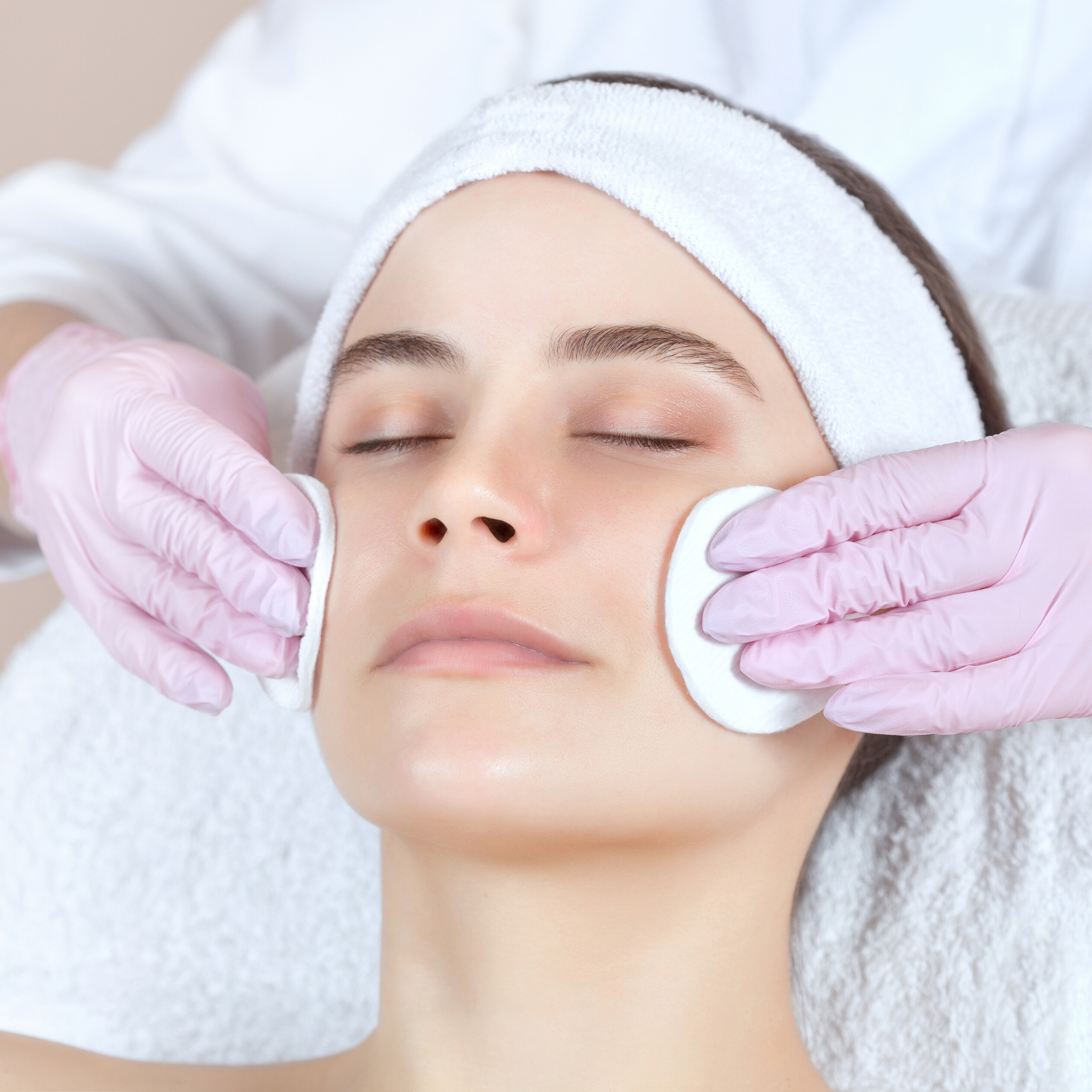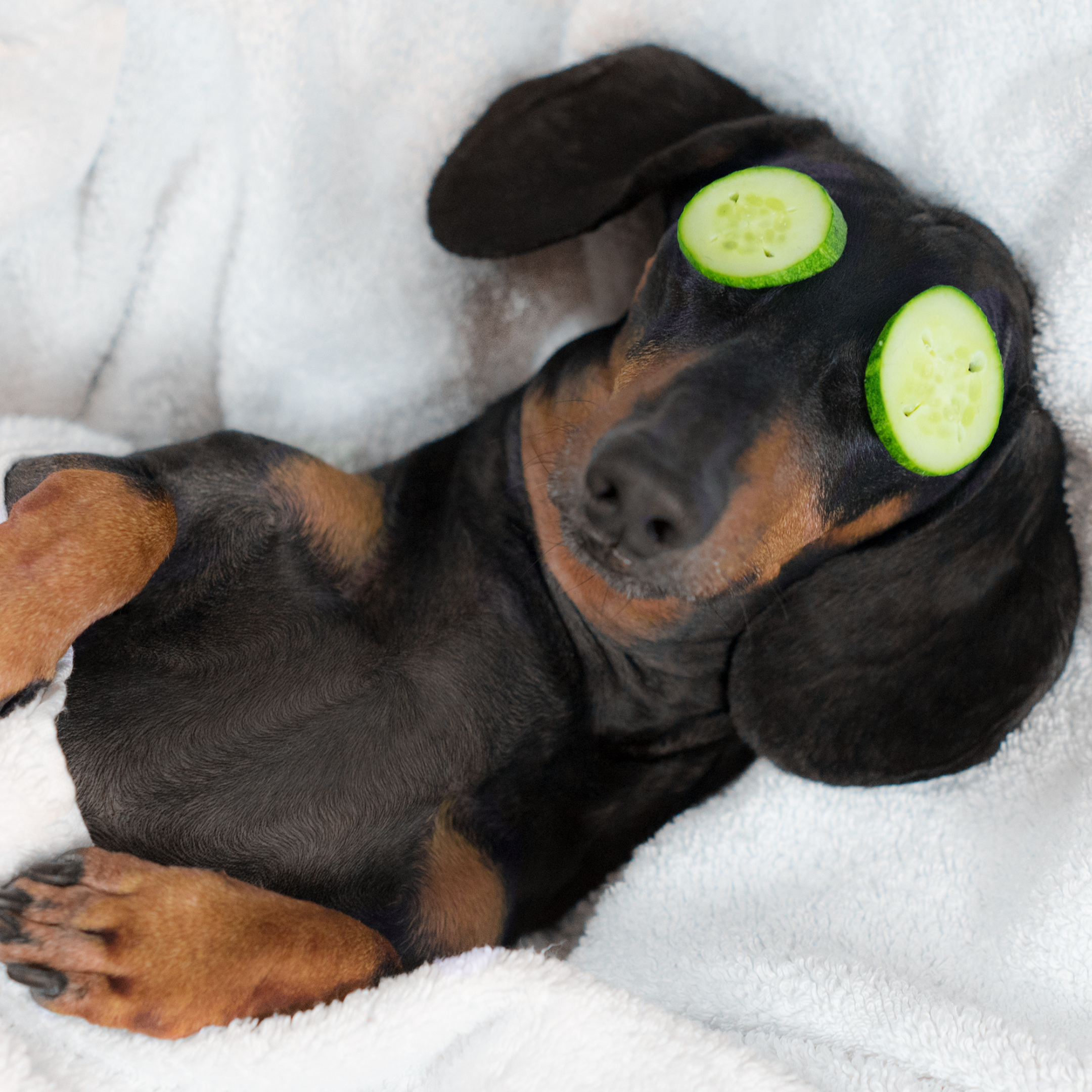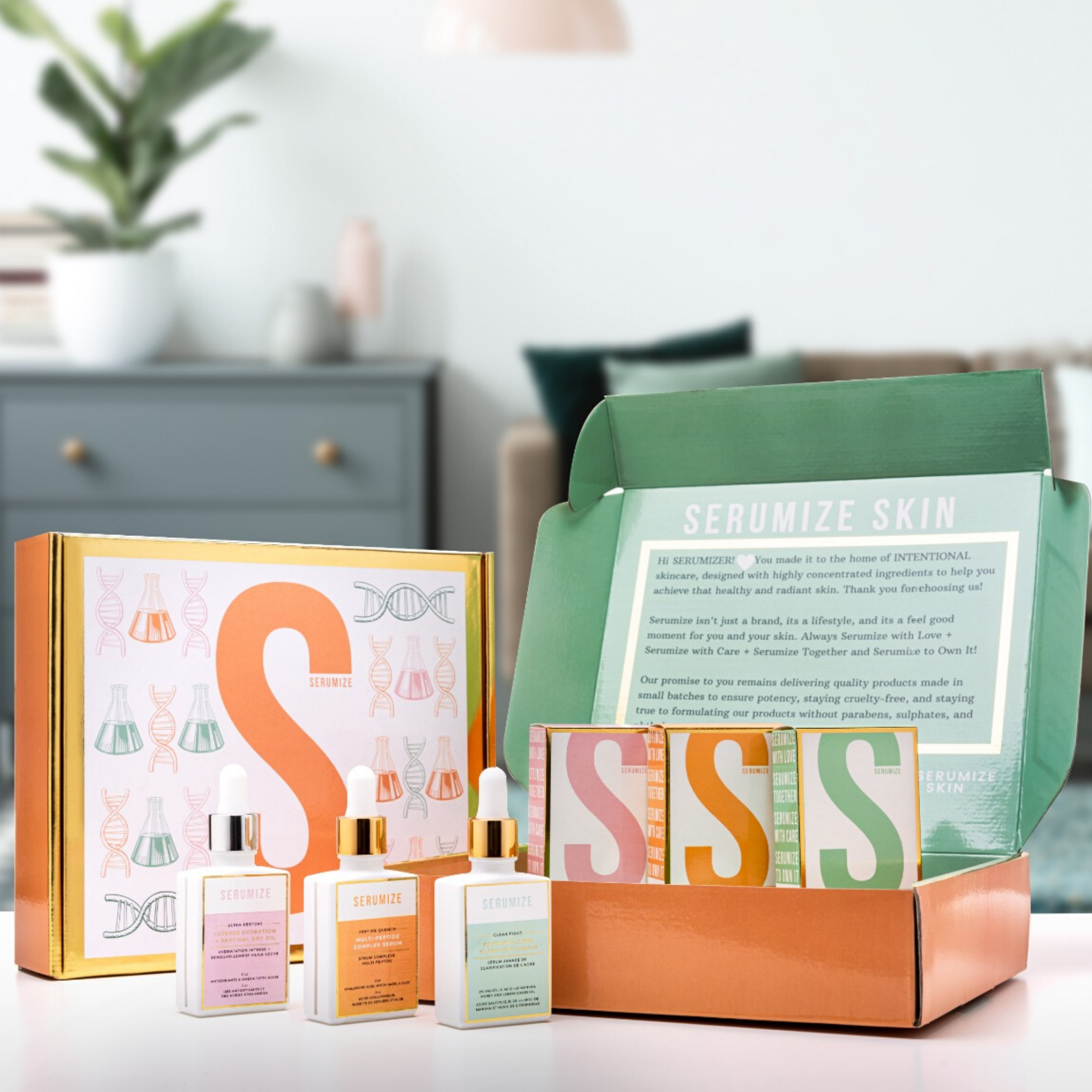How AHAs and BHA are Alike
Other similarities include that AHA and BHA:
- exfoliate the skin
- reduce the look of lines and wrinkles
- Increase the appearance of plump and firm skin
- Increases the skin’s hydration
- improve the look of dull, uneven skin tone
- smoothen the rough, bumpy texture
- increases cell turnover in the skin
How AHAs and BHA are Different
- Solubility: AHAs are water-soluble, so they dissolve in water. BHAs are oil-soluble, so they dissolve in oils (meaning they can pass through sebum and sebaceous follicles).
- Area of action: AHAs work on the top layers of skin, but BHAs work on the skin surface AND inside the pores.
- Concentration: AHAs need to be used in concentrations of at least eight percent in order to be effective, whereas BHAs only need a concentration of around two percent. Serumize Clear Fight Serum has 2% salicylic acid.
- Decreasing oil production: AHAs don't have an effect on sebum. BHAs can reduce excess oil by slowing down sebum production.
- Clearing and preventing acne, blackheads, and clogged pores: While both acids can help with mild acne (by sloughing off dead skin cells), BHAs also work on a deeper level to clear trapped sebum in the pores and prevent new blemishes from forming. They also slow down oil secretion and loosen blackheads, making them easier to extract.
- "Reducing" pores: Technically, you can't change the size of your pores—but they can look bigger when they are filled with debris, which makes them stretch out. While AHAs don't affect pores, BHAs can help them look smaller by keeping them clean.
- Sensitivity and Irritation: Any acid can be drying and irritating if you use it at the wrong concentration or pH, or if you apply it too frequently for your skin. However, AHAs are more often associated with irritation, redness, and inflammation. BHAs tend to be less irritating, thanks to their larger molecule sizes. They also have anti-inflammatory properties. If paired with complimentary soothing ingredients it also works wonders.
- Sun Sensitivity (Photosensitivity): AHAs increase your skin's sensitivity to the sun, making it more vulnerable to sun damage and premature aging. While sunscreen is essential always, BHAs can sensitize the skin, so SPF is compulsory, not optional then.
Can You Combine AHA and BHA?
If You Have Dry or Sensitive Skin:
Lactic acid is the best AHA for these concerns, as it's one of the gentlest and most hydrating acids. Look for a concentration between five to eight percent to start, moving up as high as 10 percent if tolerated. However, a mild BHA would be an equally suitable option, such as 0.5 to one percent salicylic acid or one to two percent betaine salicylate.
If You Have Acne:
BHAs are the way to go. Salicylic acid is proven to reduce the number and severity of acne lesions and is superior to benzoyl peroxide. Look for a concentration of two percent salicylic acid or its equivalent, four percent betaine salicylate. Keep in mind that you may experience initial purging (which is a good thing!).
If You Have Oily Skin:
Only BHAs will reduce oil production. It may take some experimenting to find the best dose for your skin—between 0.5 to two percent salicylic acid, or one to four percent betaine salicylate.
If You Have Wrinkles:
Glycolic acid, lactic acid, and salicylic acid have all been shown to produce changes in dermal thickness and the depth and number of fine lines and wrinkles. For best results, you'll want around eight percent (or more) glycolic or lactic acid, or one to two percent salicylic acid. Again, just keep in mind that AHAs can make your skin more inflamed and vulnerable to sun damage, which can exacerbate signs of aging.
If You Have Pigmentation:
Both AHAs and BHAs will help, but I think BHAs are your best bet—especially if you have darker skin. Unlike AHAs, they won't trigger post-inflammatory hyperpigmentation, which is a risk for many ethnicities. BHAs also have some photoprotective properties, so you're less likely to create new pigments. Go for a higher concentration if you can, such as two percent salicylic acid or four percent betaine salicylate.
In conclusion, there’s no single best way to go about using AHA and BHA exfoliants; it’s all about finding out what works best for you and then adjusting as needed based on the changing needs of your skin. What counts is that you keep using a leave-on chemical exfoliant-- get ready for compliments on how beautiful your skin looks.
Learn more about the difference between AHAs and BHAs with Candace Gellizeau, a veteran aesthetician on our You Tube channel.



